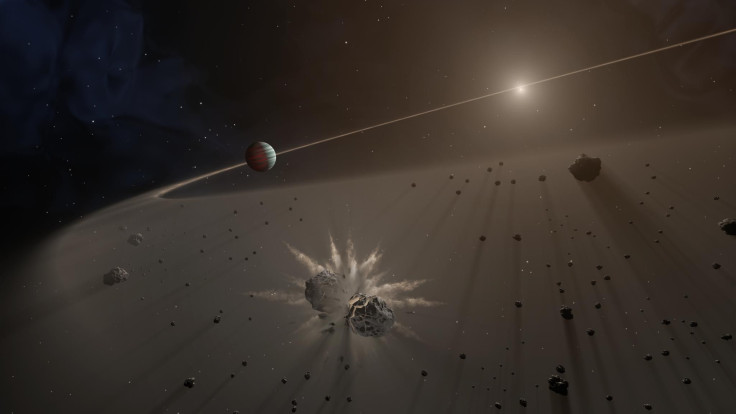To Find Giant Exoplanets, Look For Stars With Debris Disks: Study

Stars that have debris disk around them are nine times more likely to host giant planets around them than stars that don’t have a disk orbiting them, a new study has found. It could make it easier for exoplanet hunters to find new large planets outside the solar system.
These giant exoplanets would be far bigger than any planet in our solar system, between five and 20 times the mass of Jupiter, and would be located anywhere between 10 and 1,000 AU (one astronomical unit is the distance between the sun and Earth, almost 93 million miles) from their parent stars, according to the study which has been accepted for publication in the Astronomical Journal.
“Our research is important for how future missions will plan which stars to observe. Many planets that have been found through direct imaging have been in systems that had debris disks, and now we know the dust could be indicators of undiscovered worlds,” Tiffany Meshkat, lead author of the study and assistant research scientist at IPAC/Caltech in Pasadena, California, said in a statement Wednesday on NASA’s website.
Meshkat worked on this study when she was a postdoctoral researcher at NASA's Jet Propulsion Laboratory (JPL) in Pasadena.
The study provides strong evidence that giant planets keep the material that forms debris disks in check. The researchers did not determine why this happens, but speculate the phenomenon could be caused by the effect of gravity exhibited by the giant planets. The massive force they would exert on planetesimals — small bodies that could merge to form planets in the relatively early stages of a stellar system — would make them collide violently, turning into debris around the star instead of becoming planets in their own right.
“It’s possible we don’t find small planets in these systems because, early on, these massive bodies destroyed the building blocks of rocky planets, sending them smashing into each other at high speeds instead of gently combining,” study co-author Dimitri Mawet, a Caltech associate professor of astronomy and a JPL senior research scientist, said in the statement.
The giant planets in our solar system have also led to the formation of two debris “belts” — the Jupiter-influenced main asteroid belt between the gas giant and Mars, and the Kuiper belt beyond the orbit of Neptune which is shaped by the ice giant.
The presence of two belts in a stellar system is commonplace in the galaxy, Meshkat and Mawet found. But while our solar system is currently about 4.5 billion years old, all the systems studied by the researchers were much younger, between a few million to a billion years old. That also explains why those systems contain a lot more dust and debris compared to ours.
For the study, the researchers first took data for 130 single-star systems with debris disks detected by NASA's Spitzer Space Telescope. The W. M. Keck Observatory in Hawaii and the European Southern Observatory’s Very Large Telescope in Chile were use to scan the 30 systems of those 130 that hadn’t already been scanned for exoplanets, but no new planets were discovered. This entire data was compared with data for 277 other stars that do not seem to have debris disks.
The statistical probability of nine to one, in favor of systems with debris disks, to find exoplanets was calculated by Caltech graduate student Marta Bryan.
Karl Stapelfeldt of JPL, chief scientist of NASA’s Exoplanet Exploration Program Office and study co-author, said: “By showing astronomers where future missions such as NASA's James Webb Space Telescope have their best chance to find giant exoplanets, this research paves the way to future discoveries.”
Titled “A Direct Imaging Survey of Spitzer detected debris disks: Occurrence of giant planets in dusty systems,” the study is available on the preprint server arXiv.
© Copyright IBTimes 2024. All rights reserved.




















